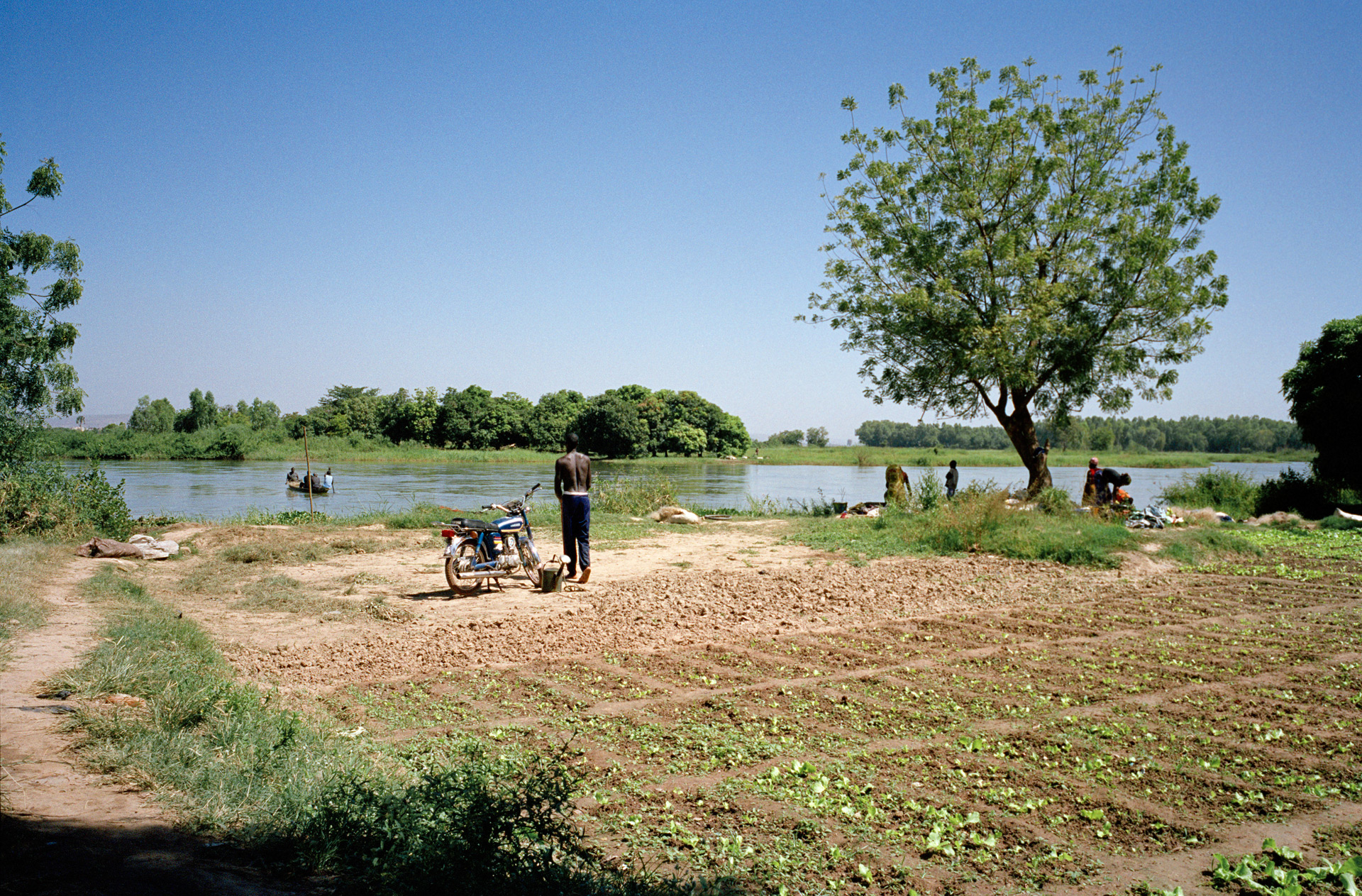In a small patch of Bamako, a few plots of land stand strong. Bamako 2009
In the southern corner of the Sahara, and on the fringe of the capital city Bamako, the fertile Magnambougou district offers an essential oasis. Along the banks of the river Niger, carefully organized plots of land crisscross broken houses and dirt roads. As urbanization of Mali’s capital continues — a trend replicated across West Africa — the tranquil ‘green lung’ plays an increasingly positive role in cooling and feeding the sun-soaked city.
Independent growers farm greens and root vegetables on small plots of land with basic tools. This is perhaps an inefficient approach compared to industrial agriculture, yet Magnambougou farms drive the informal economy. Local vendors sell the produce at markets, while deliverymen make short trips between field and shop. It’s a rare instance of small-scale growers providing a capital city with some degree of food independence.
Still, subsistence crops are diminishing under the weight of urbanization and population expansion. Planners and developers continue to prioritize residential zoning over arable land. To fight this, Malian farmers are forming collectives, backed by community funding. They say they must work creatively to make sure farms stay local, prices stay affordable for residents, and the city stays cool — all the while finding time to ensure their crops can flourish.


















